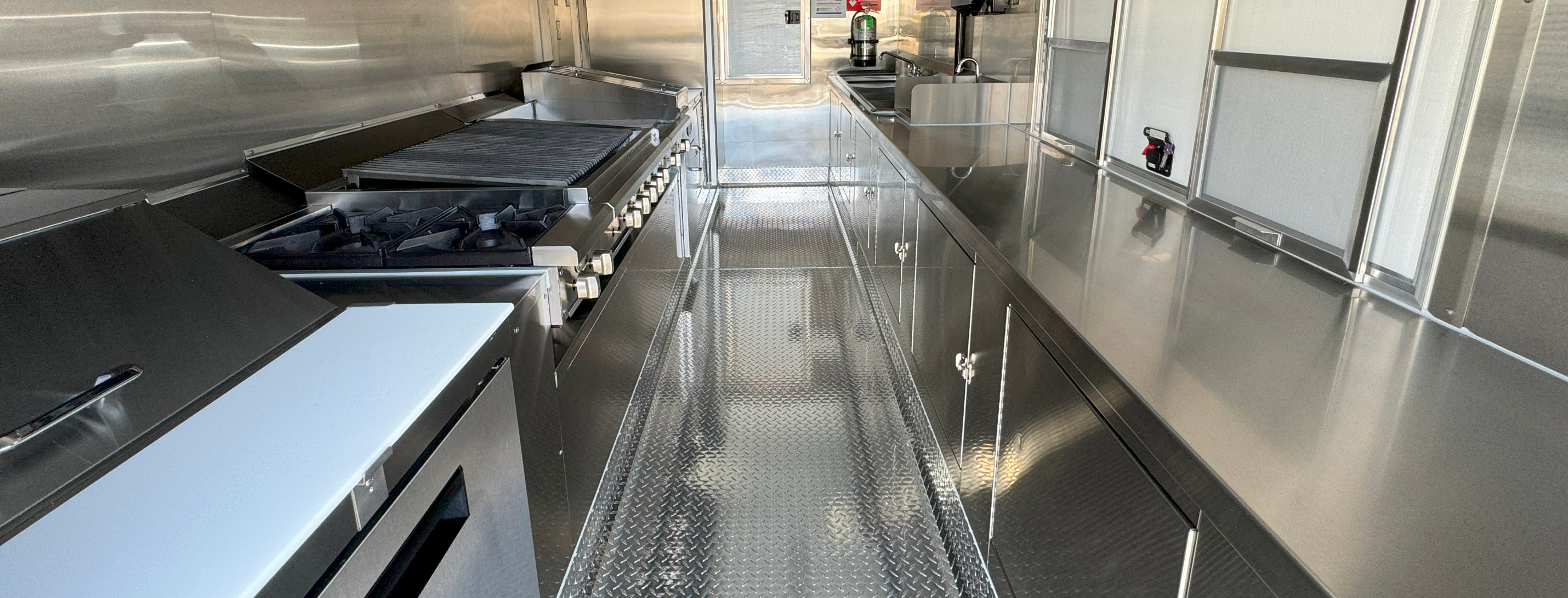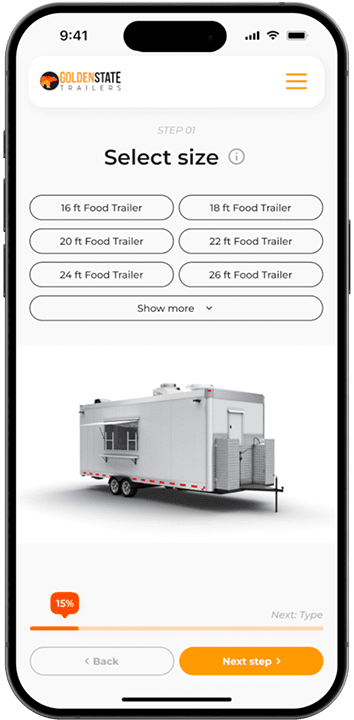In recent years, there has been a noticeable surge in the popularity of food trailers serving diverse cuisines, with Asian cuisine food trailers making significant strides. If you’re considering entering the mobile food business, an Asian cuisine trailer is a unique and promising opportunity. These trailers allow entrepreneurs to bring the vibrant and complex flavors of Asia to cities across the country.
Asian cuisine offers a diversity unmatched by many other culinary traditions. From savory dumplings and spicy ramen to delicate sushi and robust curries, there’s something for everyone. This variety enables food trailer owners to cater to a wide audience, increasing the potential customer base. Additionally, Asian food trailers are often more compact in their needs, allowing for streamlined operations that can be efficiently managed within the limited space of a trailer.
The rise in the U.S. of health-conscious and adventurous eating habits has positively influenced the growth of Asian cuisine food trailers. More consumers are seeking authentic and flavorful alternatives to traditional fast food. By operating a food trailer specializing in Asian dishes, entrepreneurs can capitalize on this trend while keeping overhead costs low compared to a brick-and-mortar restaurant.
Delivering authentic Asian flavors requires the right equipment. Whether it’s a robust wok station or a specialized sushi counter, the key to success lies in meeting the specific culinary needs of the cuisine you choose to serve. Equipment like rice cookers, deep fryers, and steam tables are often standard in Asian cuisine food trailers. For those venturing into sushi or ramen offerings, refrigeration units and noodle boilers are essential.
Investing in high-quality, efficient equipment not only ensures the smooth operation of your trailer but also enhances food quality. This can lead to higher customer satisfaction and a loyal customer base. Discover more equipment options for specialized dishes like ramen by visiting Ramen Food Trailers.
The design and layout of your food trailer can significantly affect the efficiency of your operations and the quality of service you provide. A thoughtful layout should prioritize workflow efficiency, ease of cleaning, and customer service accessibility. Consider incorporating design elements that reflect the culture and theme of the cuisine, enhancing the visual appeal.
For more insights into optimizing your food trailer’s layout and design, explore examples that have successfully executed both traditional and modern Asian culinary experiences.
Operating a food trailer, especially one that serves raw ingredients like sushi or quickly perishable items like fresh produce, comes with specific health and safety standards. Ensuring your trailer is up to code with NSF-compliant equipment is paramount. Regular health inspections require meticulous attention to cleanliness and food safety practices, crucial for maintaining an unblemished reputation.
Understanding and adhering to local health department regulations will not only help you comply with the law but also instill customer trust in your business. If you’re looking for more comprehensive guidance on health compliance, consider visiting Asian Cuisine Trailers.
Starting an Asian cuisine food trailer can be a cost-effective way to enter the food industry compared to traditional restaurant models. However, understanding financing options is crucial. From purchasing a trailer to acquiring necessary permits and insurance, initial costs can add up. Entrepreneurs can explore small business loans, equipment leasing programs, or partnerships to alleviate financial burdens.
Understanding your financial options and planning effectively can ease the process of launching and sustaining your business. Advanced planning and proactive management play critical roles in ensuring the financial health of your food trailer venture.
Owning an Asian cuisine food trailer allows entrepreneurs to provide diverse and popular culinary options with lower operational costs compared to fixed-location restaurants.
The choice of equipment depends on the specific dishes you plan to serve. Consider the culinary techniques your menu requires, like frying, steaming, or grilling, and select equipment accordingly.
Yes, there are specific health regulations that primarily involve maintaining cleanliness and proper food temperature. It is important to understand local health codes and ensure compliance.
Focus on an efficient workflow, ease of cleanliness, and incorporate cultural elements that highlight the cuisine. A well-thought-out design can enhance customer experience and service efficiency.
Explore various financing options such as small business loans, equipment leasing, or partnerships to fund your trailer.
Popular options include sushi, ramen, dumplings, and boba tea, as they cater to a wide range of tastes and food preferences.
 Team Building Success at Golden State Trailers: A Redfin Adventure
At Golden State Trailers, we believe in the power of community and adventure, which is why we’re excited to announce our recent feature in Redfin’s latest article! Sacramento, CA, a city rich in history and culture, offers the perfect backdrop for new adventures, team building, and success. Whether it’s exploring the picturesque Old Sacramento Waterfront […]
Team Building Success at Golden State Trailers: A Redfin Adventure
At Golden State Trailers, we believe in the power of community and adventure, which is why we’re excited to announce our recent feature in Redfin’s latest article! Sacramento, CA, a city rich in history and culture, offers the perfect backdrop for new adventures, team building, and success. Whether it’s exploring the picturesque Old Sacramento Waterfront […] Coffee Cart Guide – How To Start a Profitable Mobile Coffee Cart Business
Coffee carts have transformed from simple mobile stands into full professional micro coffee shops capable of serving high quality espresso, milk based drinks, cold beverages and specialty menu items. They offer one of the easiest and most affordable ways to enter the coffee industry, especially for entrepreneurs, baristas and small business owners who want to […]
Coffee Cart Guide – How To Start a Profitable Mobile Coffee Cart Business
Coffee carts have transformed from simple mobile stands into full professional micro coffee shops capable of serving high quality espresso, milk based drinks, cold beverages and specialty menu items. They offer one of the easiest and most affordable ways to enter the coffee industry, especially for entrepreneurs, baristas and small business owners who want to […]
